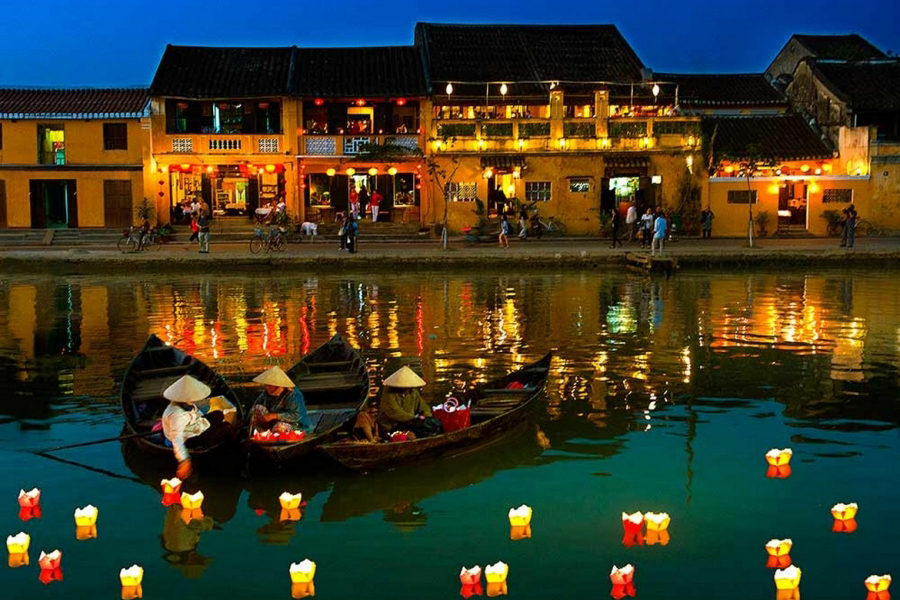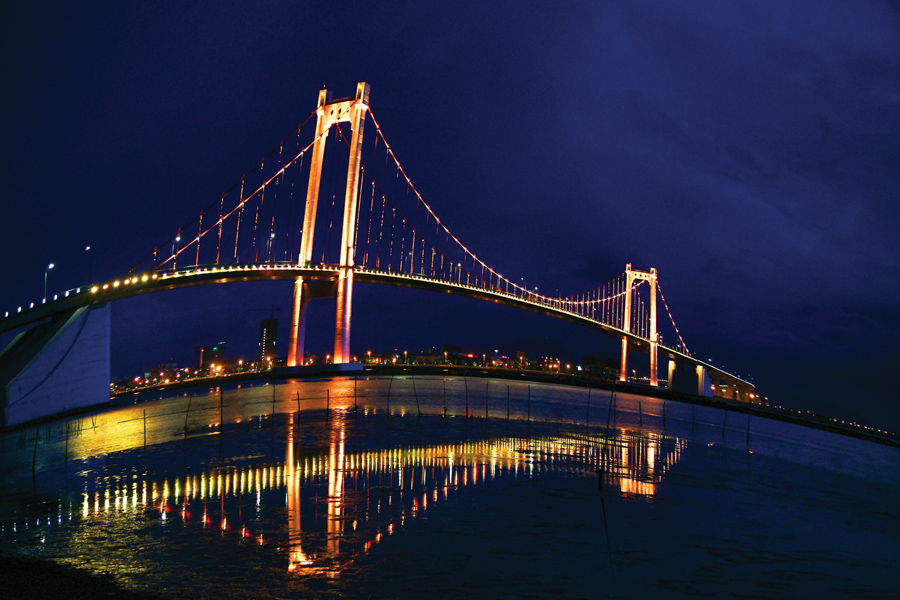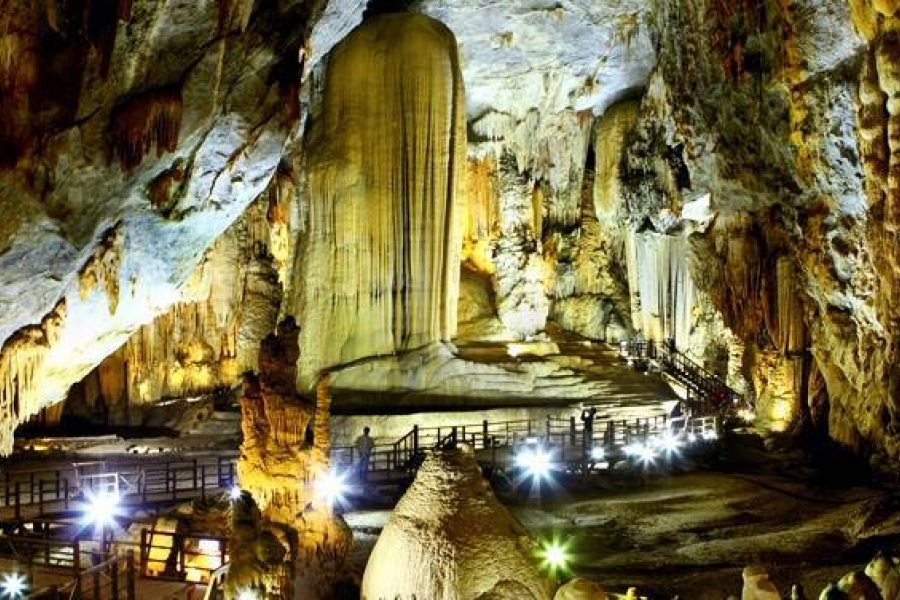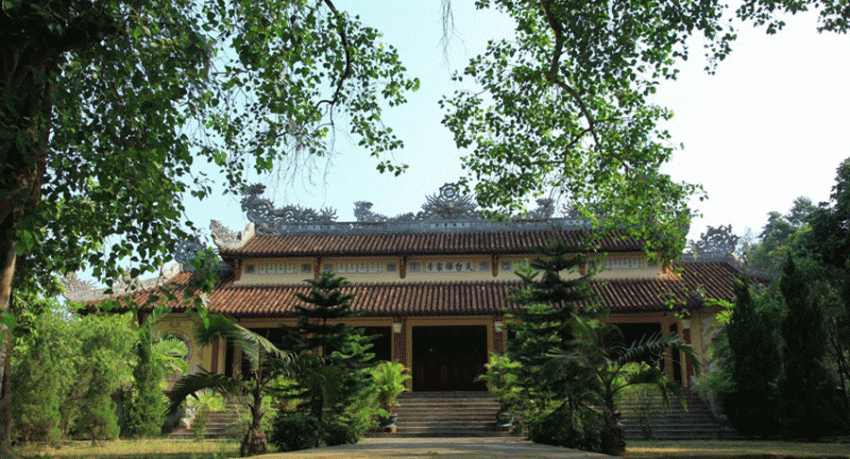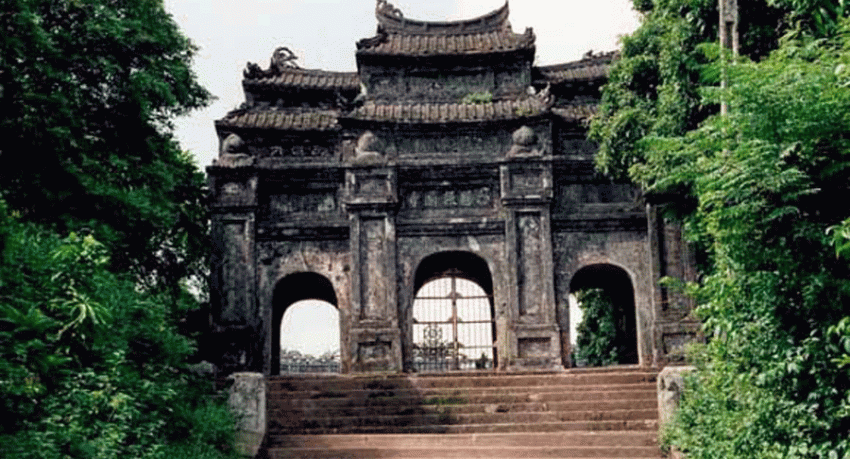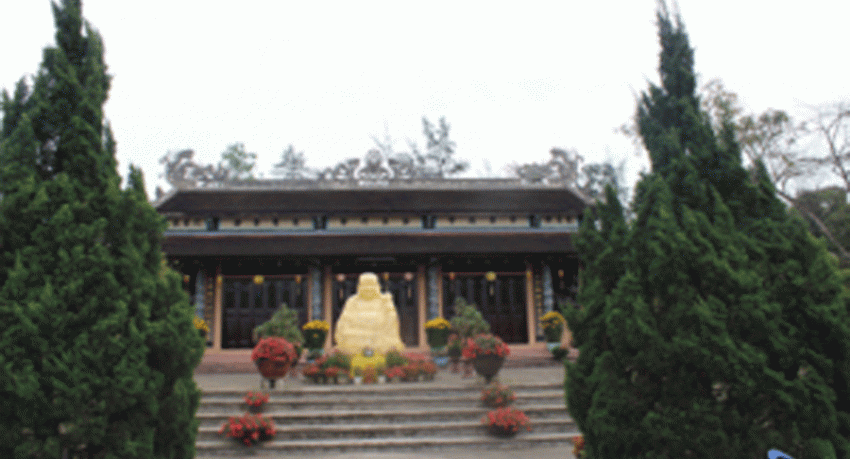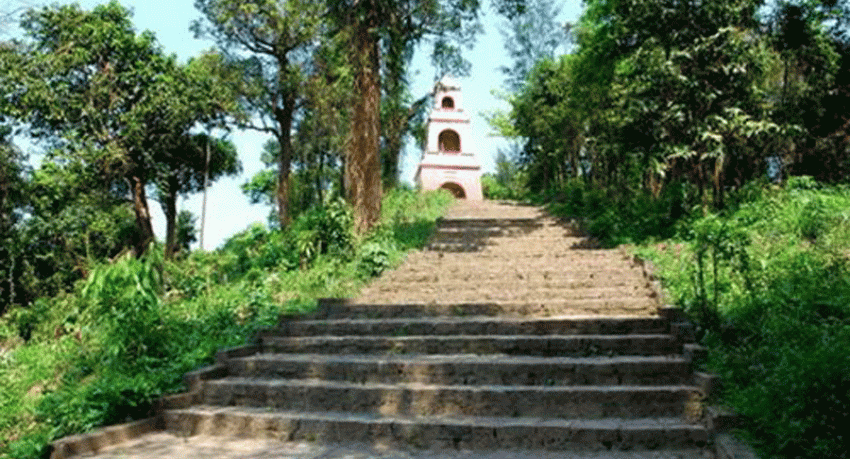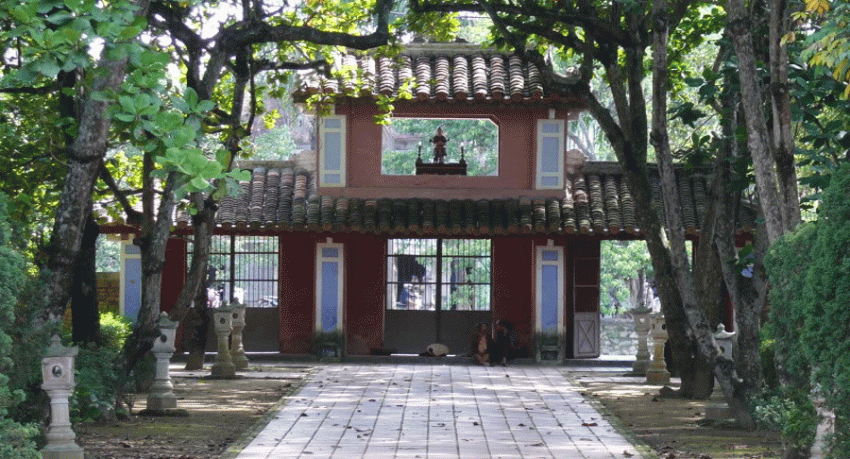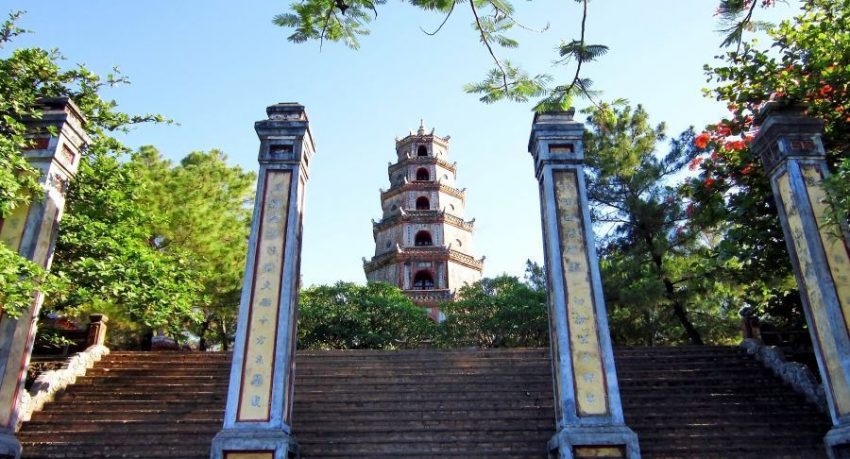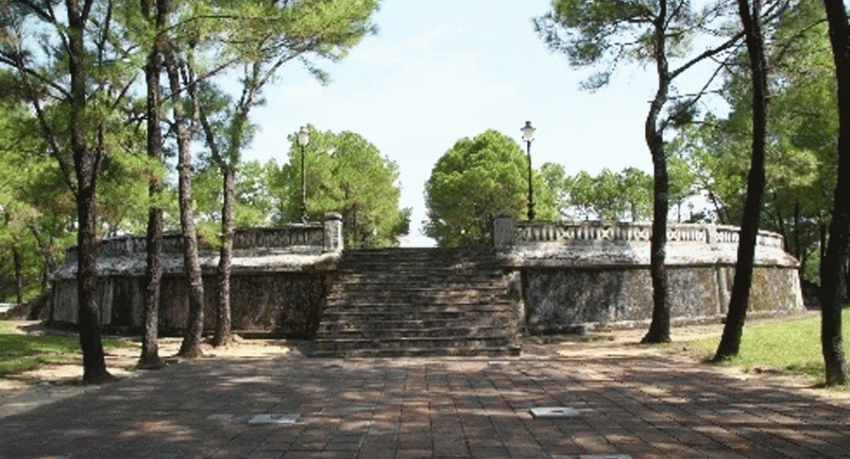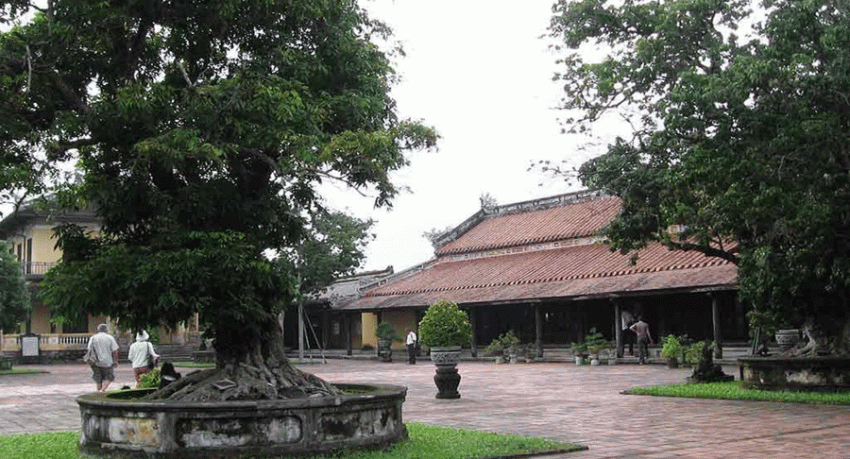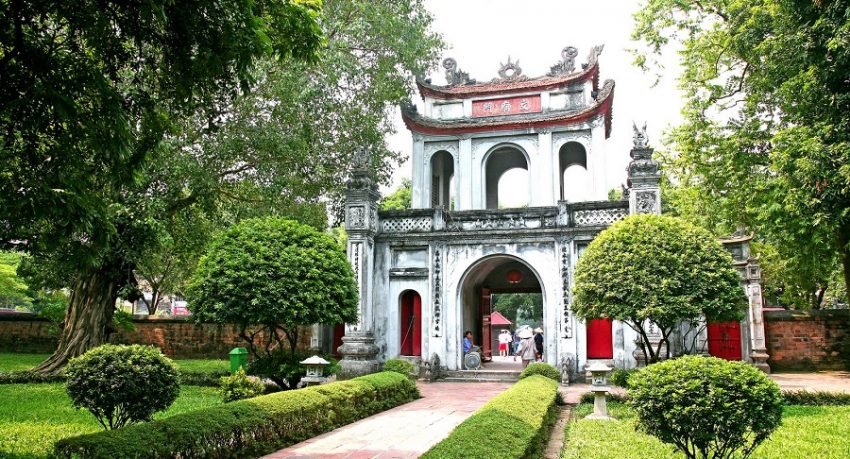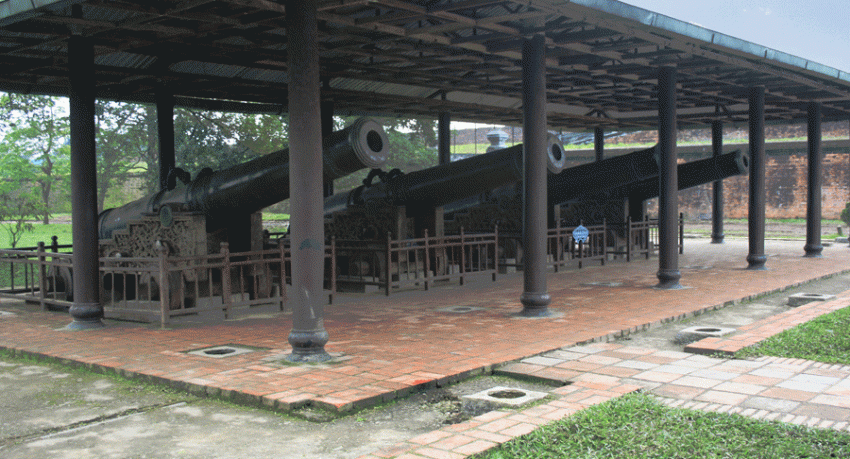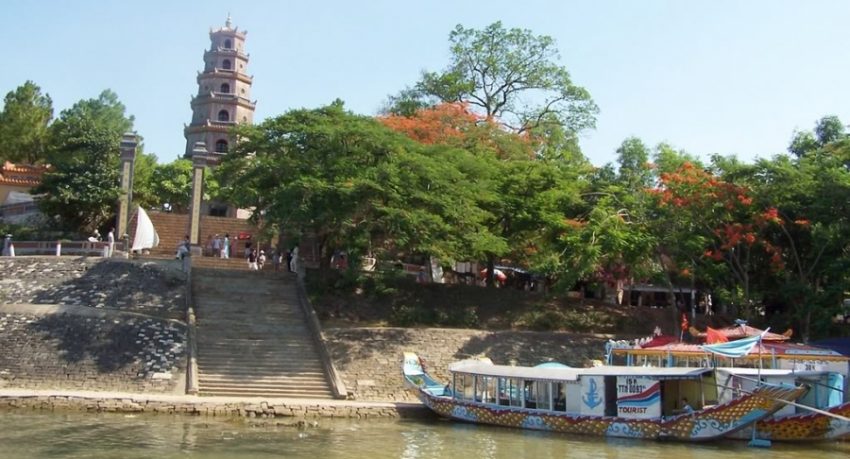Thuyen Ton Pagoda is a big one in Hue and also the original centre of Lieu Quan school (a branch of Lam Te zen school). The great Lieu Quan came from the Cau River (Phu Khanh), then moved to Thuan Hoa at the end of the XVIIth and studied with many chinese hight-rank monks. In […]
Read More...Bao Quoc Pagoda
Bao Quoc Pagoda wasfounded by the venerable Giac Phong towards theend ofthe 17th century. It was originally called Ham Long Thien Tho tu Pagoda, after the hill on which it stands. The pagoda islocated in Phuong Duc district, close to the centre of hue, and is bordered by Dien Bien Phu street on the east, […]
Read More...Quoc An Pagoda
Quoc An Pagoda was established in 1684. Its original name was Vinh An. On the 27th day of the 5th month of the Ky Ty year (13 july, 1689), Lord Nguyen Phuc Tran bestowed the pagoda with the name Quoc An, or national Merit (“Sac tu Quoc An tu”). Quoc An has played an infuential […]
Read More...Tuy Van Pagoda
Tuy Van Pagoda was erected on Tuy Van Hill, 30 kilometers south of hue, near Tu Hien estuary. Its is small hill between Cau Hai lagoon and the south China sea. In the 17th centy . Lord Nguyen Phuc Tan (1648 – 1687), on visiting the site was captivated by the beauty of the hill […]
Read More...Dieu De Pagoda
Mentioning Dieu De Pagoda, all of the Hue people remember and fell proud of the following verses: Dong Ba, Gia Hoi the two bridges Facing Dieu De with four towers and two bells 0r Dong Ba, Gia Hoi – the two bridges Facing Dieu De with drum shelter and bell tower Dieu De is one […]
Read More...Thien Mu Pagoda
Thien Mu Pagoda is the most ancient, the most architecturally imposing and also the most beautiful pagoda of Hue City. Thien Mu Pagoda was build on Ha Khe hill, Huong Long commune, 5km west of the ciy centr. The story of this place of scenic beauty is lengendary. It is said that there appeared a […]
Read More...Nam Giao Esplanade
In the feudal history, since Ly dynasty’s time, Nam Giao Explanade was established to worship god. In succeeding times, the designs of the worship terrace and worship ceremonies were more and more solemn and dignified. In the Nguye dynasty, right after being crowned (1802), emperor Gia Long had the terrace embanked in an Ninh village […]
Read More...Quoc Tu Giam Institution
Quoc Tu Giam was the insutitution formerly organized by the imperial court to train scholars to sever the feudaism. In our country, the first Quoc Tu Giam was founded in 1076 in the capital Thang Long. When the Nguyen dynasty was set up and chose Hue its capital, Quoc Tu Giam was established in Hue […]
Read More...Hue Temple Letters
The temple of letters is a worship temple founded by the Nguyen dynasty to clebrated scholars of Confucianim. Formerly, many various Temple of letters were built by the Nguyen Lords in the capital and moved to three different places: Trieu Son villgae, Luong Qoang village and Long Ho village. In 1808, when realizing the constrution […]
Read More...Nine Genies Canon
Among the ten of genies bronzoe canons cast during the reign of Nguye Lords and Emperors, the nine canons manufactured in Gia Long’s time have biggest sizes with the most beautiful decorations. After conquering the Tay Son dynasty and coming to the throne, Emperor Gia Long had all the bronze objects confiscated from the former […]
Read More...Tang Tho Pavilion
Tang Tho pavilion is the national Bureau of Archives of the Nguyen dynasty. According to “Dai Nam Thuc Luc” and “Dai Nam Nhat Thong Chi”, Tang Tho pavilion was built in summer 1825. The pavilion was made from bricks and stones. The lower floor has 11 rooms, the upper one has seven rooms and two […]
Read More...Hien Lam Pavilion
The Vietnamese aesthetic researchers state that “In the citadel the mots striking thing… is Hien Lam pavilion, a beautiful construction with 3 layers and 12 roofs”. Hien Lam pavilion was built at the same time with the temple (1821 – 1822) during Minh Mang’s reign. Hien Lam pavilion was constructed right in front of the […]
Read More...
